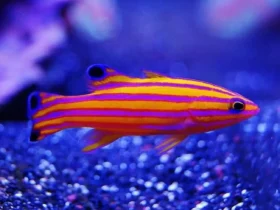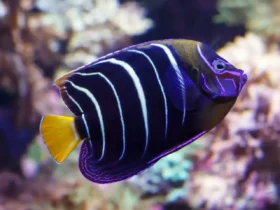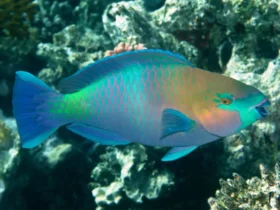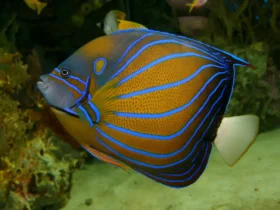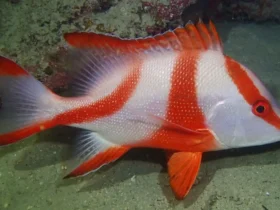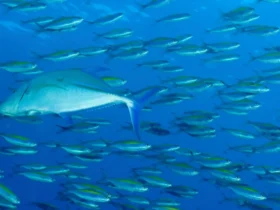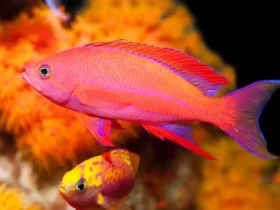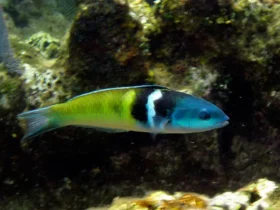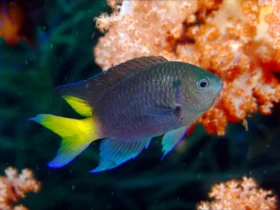In the vibrant and diverse world of coral reefs, a true work of art gracefully glides through the water—the Picasso Triggerfish (Rhinecanthus aculeatus). With its bold and intricate patterns, this charismatic fish captures the attention of divers and snorkelers alike. Join us as we explore the captivating world of the Picasso Triggerfish, uncovering its appearance, behavior, habitat, and the fascinating qualities that make it a true masterpiece of the ocean.
Picasso Triggerfish images
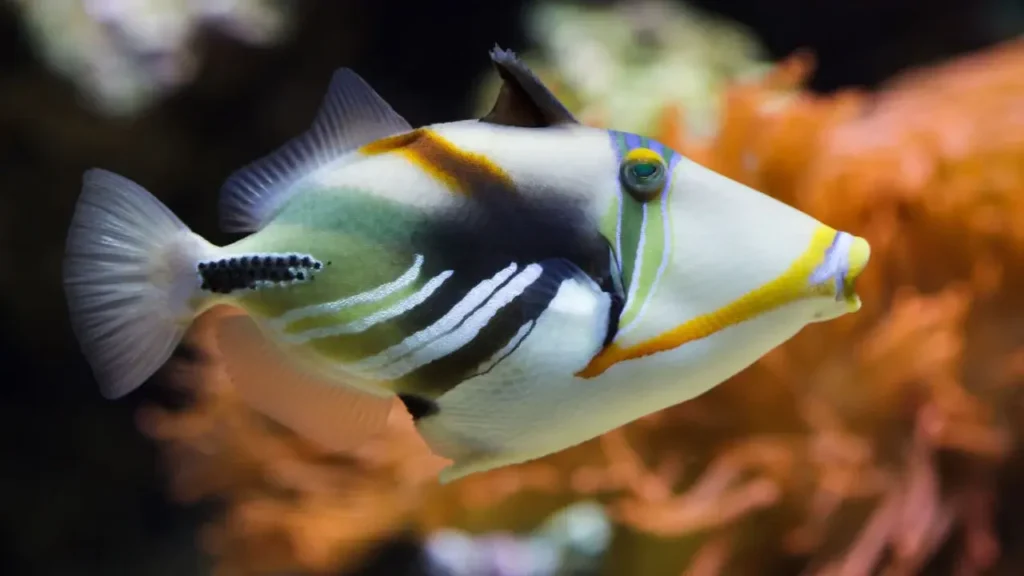
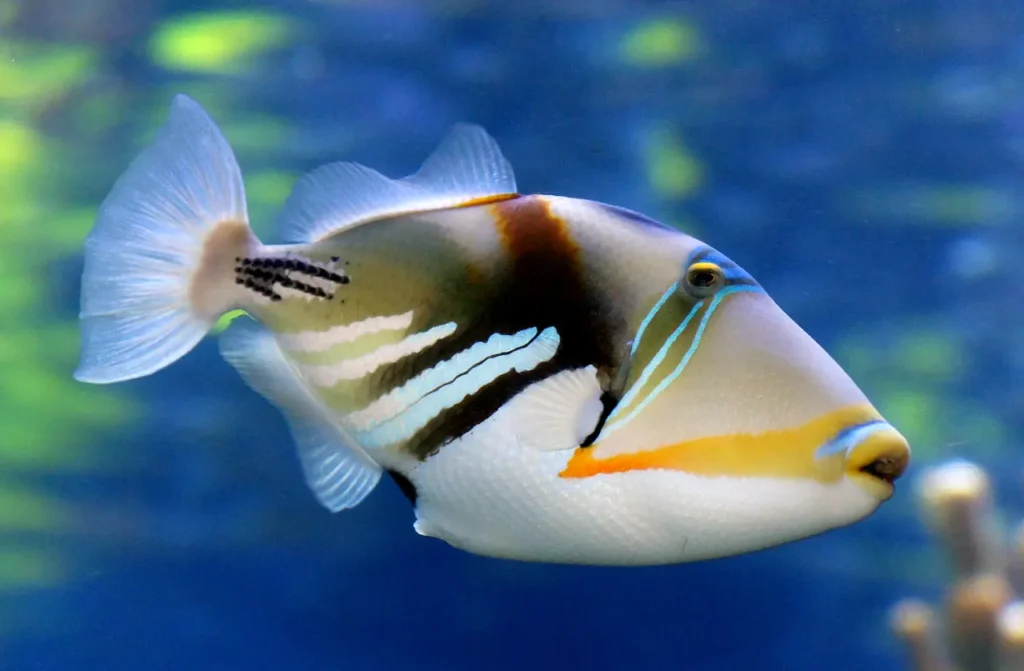
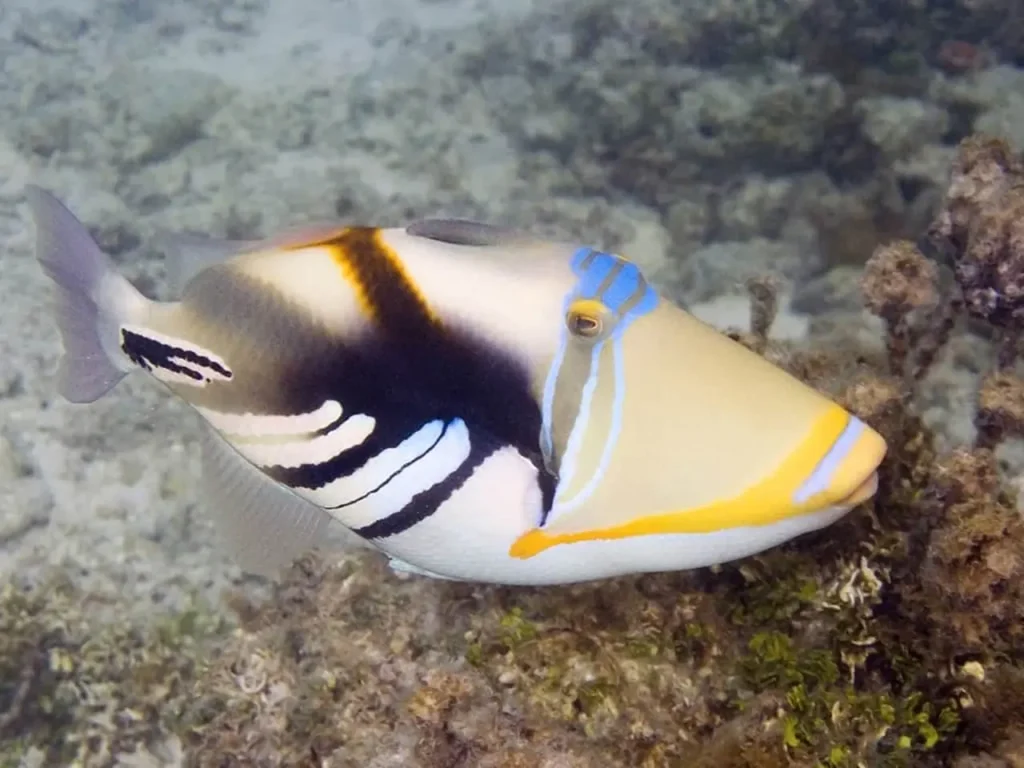
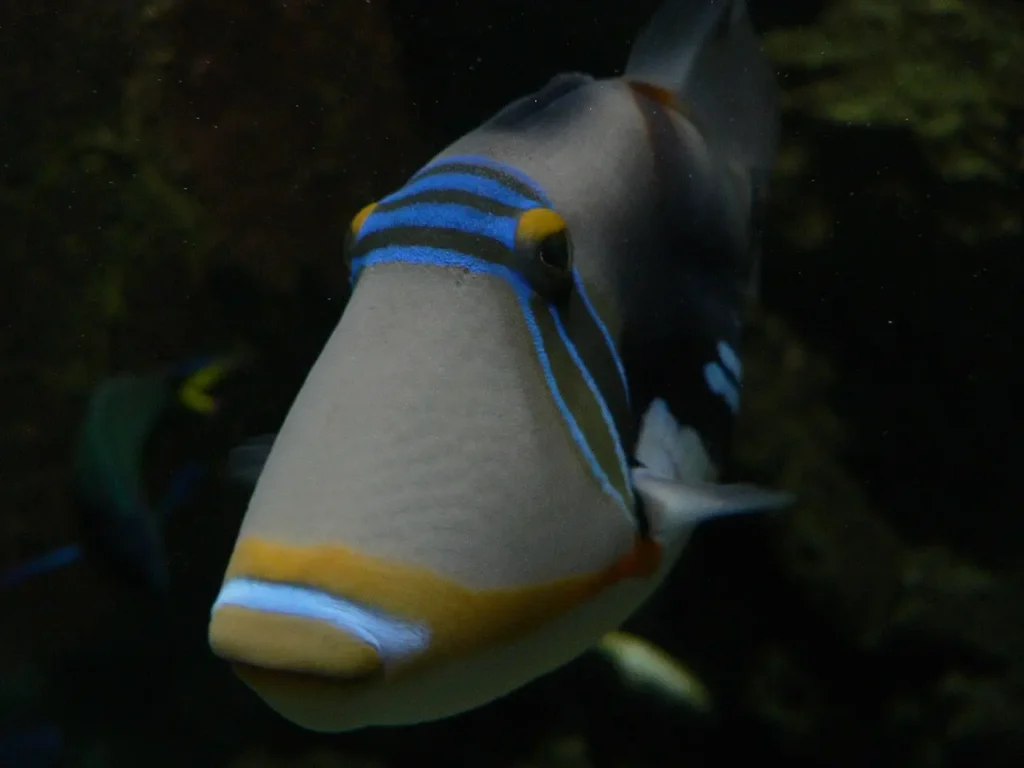
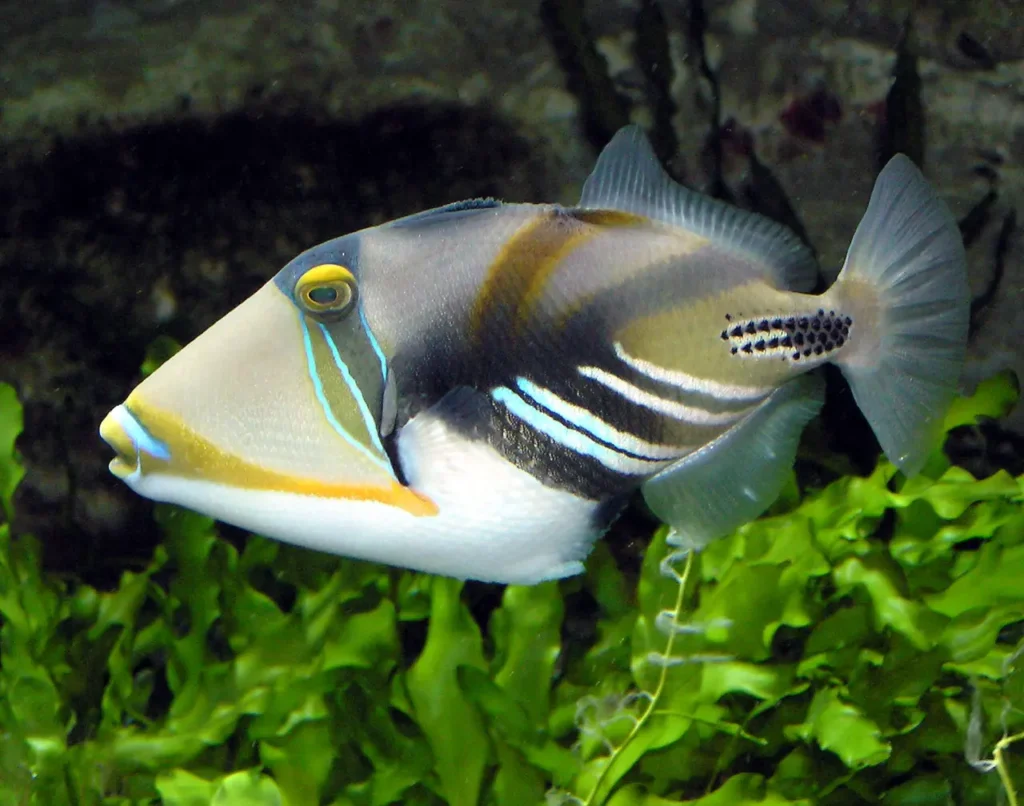
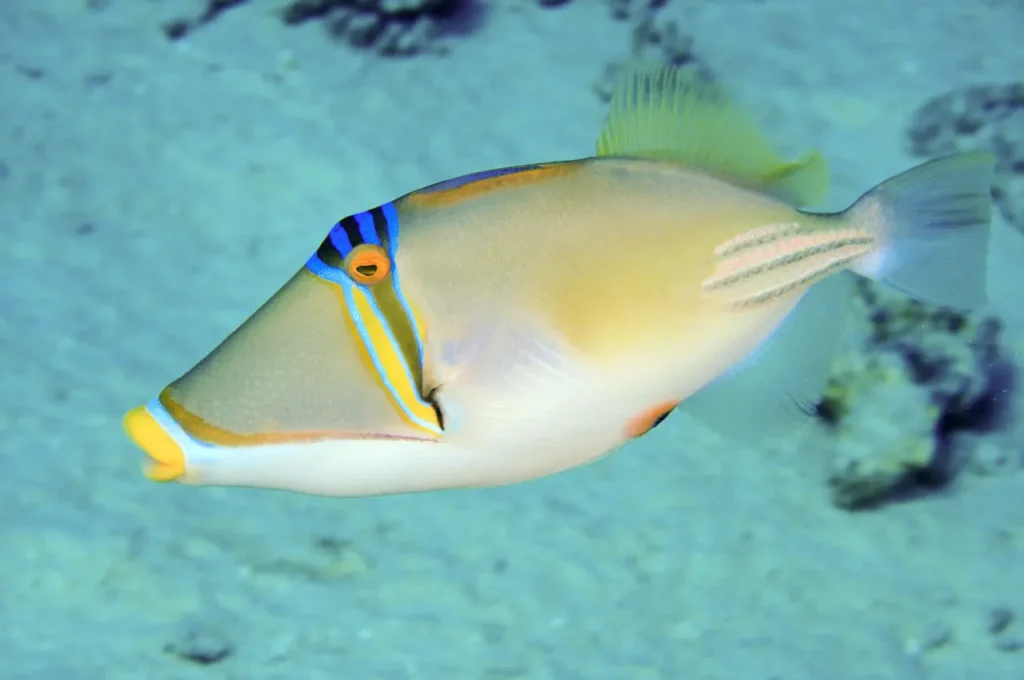
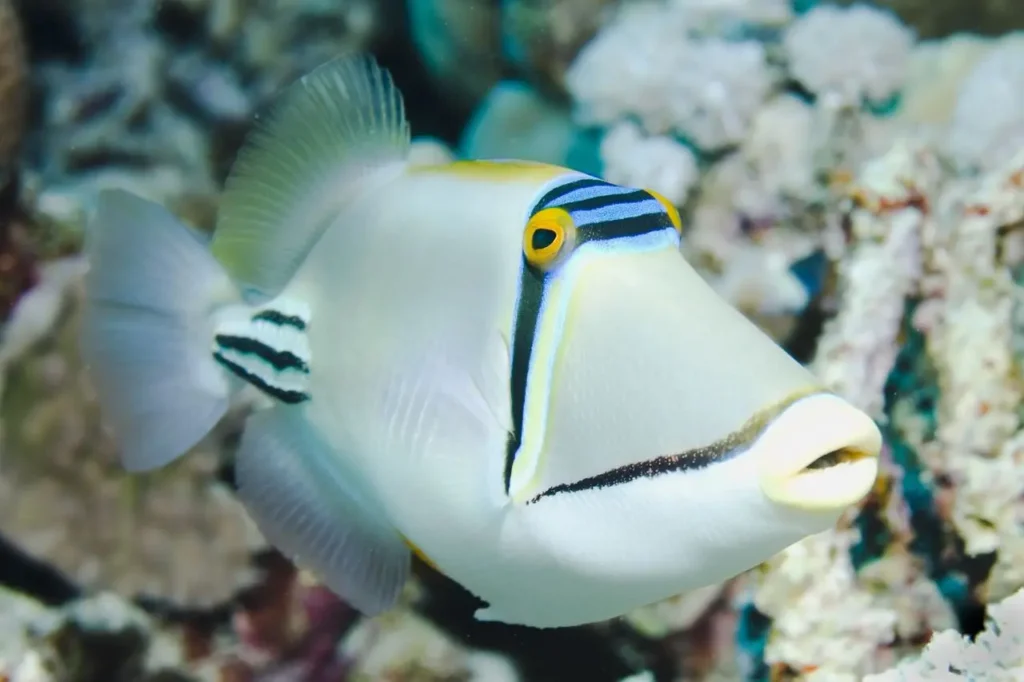

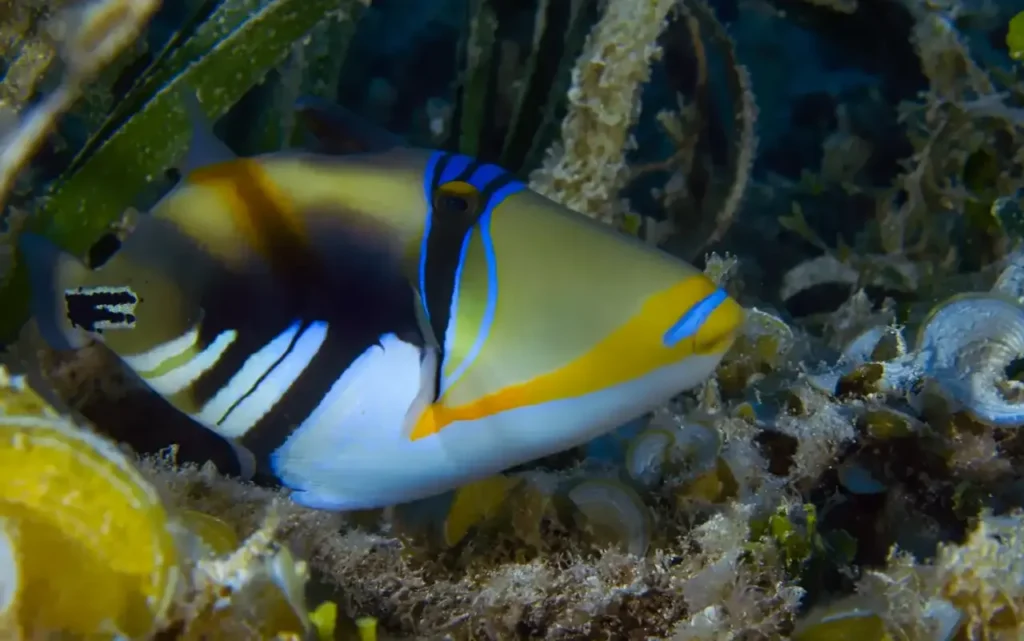
Appearance and Coloration
The Picasso Triggerfish boasts a stunning display of colors and patterns, earning its name as a living canvas. Its body is primarily yellow with distinct black markings that resemble abstract brushstrokes. The dorsal fin showcases a vibrant blue coloration, while the caudal fin displays bold splashes of blue and yellow. The eye-catching pattern and vibrant hues of the Picasso Triggerfish make it one of the most visually striking fish in the coral reef ecosystem.
Unique Features and Adaptations
One of the most distinctive features of the Picasso Triggerfish is its large, powerful jaw equipped with sharp teeth. This specialized mouth allows it to feed on a variety of prey, including mollusks, crustaceans, and small fish. The triggerfish family is known for its trigger-like first dorsal spine that can be erected for defense or securing themselves within crevices, making them difficult for predators to remove. They can also rapidly change their coloration to blend with their surroundings, providing effective camouflage and protection.
Behavior and Habitat
Picasso Triggerfish are typically found in tropical coral reefs and rocky habitats of the Indo-Pacific region. They are known for their aggressive nature, vigorously defending their territory against intruders, including larger fish and divers. Despite their territorial behavior, they are also attentive parents. Male Picasso Triggerfish construct large, intricate nests in the sand, where they attract a female to lay her eggs. Once hatched, the male diligently guards the nest and cares for the offspring until they are ready to venture out on their own.
Conservation and Threats
The Picasso Triggerfish is currently not listed as a threatened species. However, like many reef-dependent fish, it faces potential threats due to habitat destruction, overfishing, and coral reef degradation. Climate change, including rising sea temperatures and ocean acidification, poses additional challenges to the health and survival of coral reef ecosystems. Conservation efforts focused on protecting coral reefs, implementing sustainable fishing practices, and raising awareness about the importance of marine conservation contribute to the long-term preservation of the Picasso Triggerfish and its habitat.
Appreciating Nature’s Masterpiece
The Picasso Triggerfish’s striking colors and fascinating behavior make it a sought-after subject for underwater photographers, divers, and snorkelers. Observing this living work of art gracefully swimming through the vibrant coral reefs is a true delight, connecting us to the beauty and wonders of the ocean.
The Picasso Triggerfish, with its intricate patterns, vibrant colors, and unique adaptations, represents the artistic wonders found beneath the ocean’s surface. Its presence reminds us of the immense biodiversity and fragile beauty of coral reef ecosystems. By supporting conservation efforts, promoting sustainable practices, and raising awareness about the importance of protecting marine habitats, we can ensure that the Picasso Triggerfish continues to grace our oceans, inspiring awe and appreciation for the natural world’s masterpieces.
